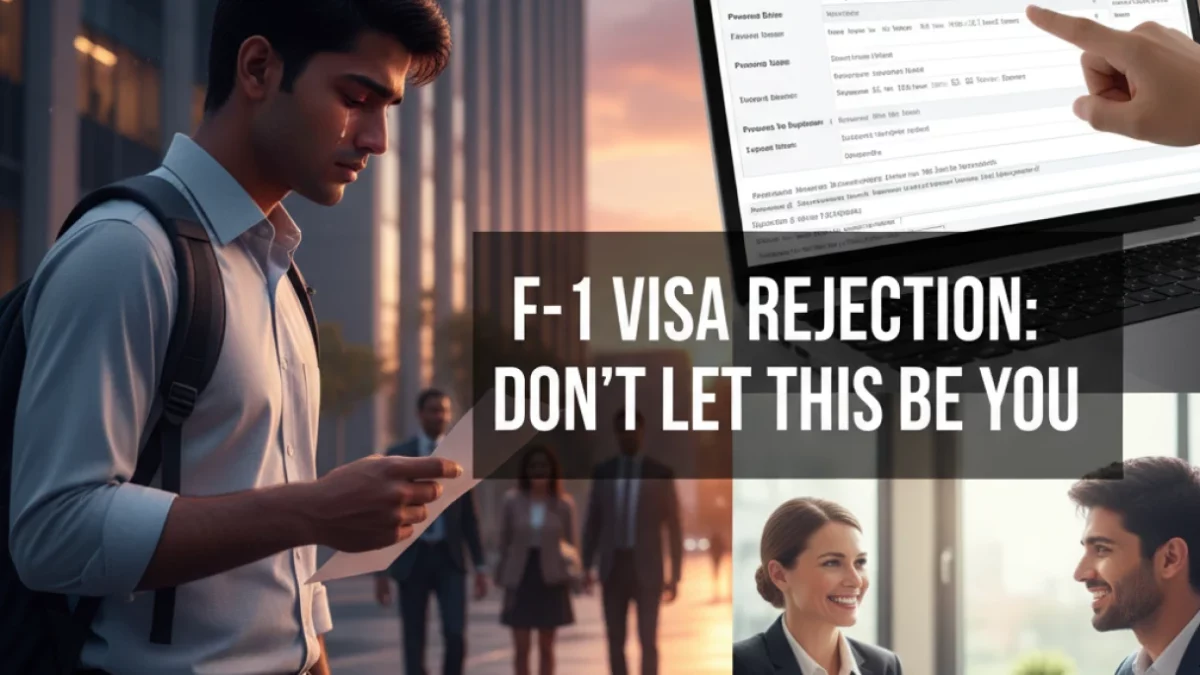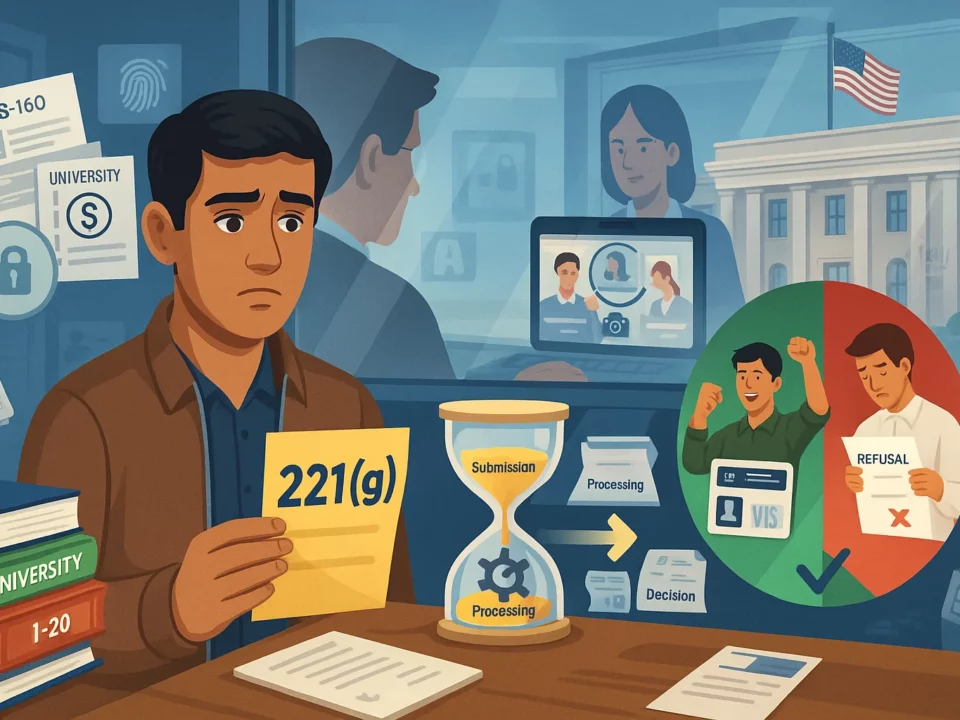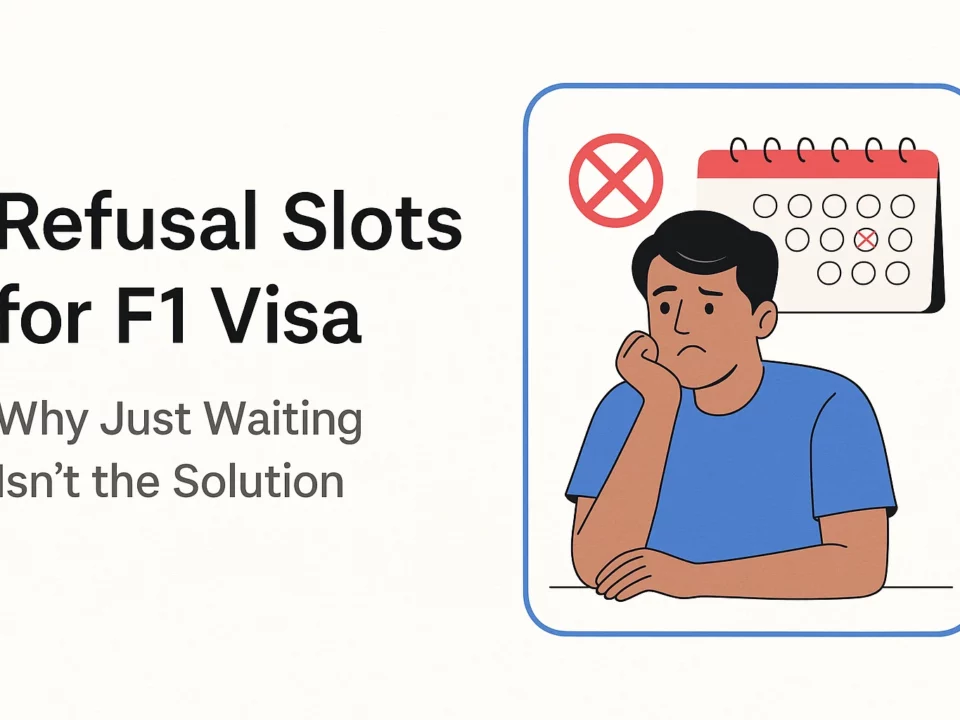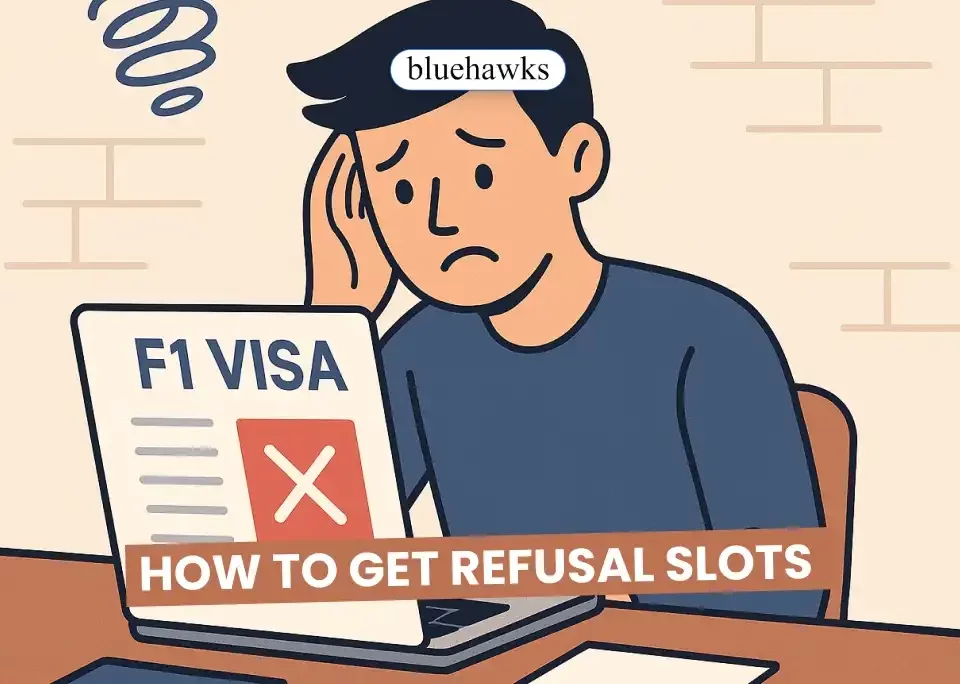F-1 Visa Rejection: Why a Casual Approach Won’t Work

Estimated reading time: 6 minutes
Have you ever seen a student walk out of the US consulate with tears in their eyes, a crumpled refusal slip in hand? It’s a heartbreaking scene, and sadly, it’s far too common. While it’s easy to blame bad luck or a strict visa officer, the truth is that most of these rejections come down to one simple thing: a casual, “it’ll be fine” attitude toward a very serious process.
The problem, you see, starts long before the interview. It starts with the DS-160 form.
The DS-160: Your Narrative, Not Just a Formality
It’s a common misconception that filling out the DS-160 is a simple checkbox exercise. Unprepared candidates often tell us, “I just finished my bachelor’s, so I wrote ‘not employed’.” Or they’ll jot down a one-line explanation for a previous refusal. This is where they get it wrong, and it’s why so many applications end in tears.
You’re absolutely right: the US visa application process is not a “hit and trial.” It’s a structured system designed to assess your credibility. Your agent or local consultant might not care, but your future is at stake.
The reason you don’t find a word limit on crucial DS-160 sections like “Present Work/Education/Training” or “Explanation of Previous Refusal” is a silent invitation from the US consulate. It means, “Tell us your story. Don’t just give us a fact.”
The “Current Duties” Box
This is your golden opportunity to set the stage for your interview. The visa officer reads this before they even see you. An ideal response in this box does three critical things at once. We at Bluehawks EduAbroad advise our students to craft their narrative to instantly answer these questions:
1. What are you doing currently?
This isn’t just about a job or school. If you’re “unemployed,” what are you actually doing? Are you taking online courses? Volunteering? Working on a passion project? For example, instead of “Not Employed,” you could write: “Since completing my B.Sc. in Computer Science in May 2025, I have been focused on a personal project to develop a mobile application for local farmers to track crop data. This has allowed me to apply my skills in database management and mobile development.”
2. How is this connected to your desired program?
This is the most important link you need to establish. You must show that your current activities are directly leading you to the program you want to study in the US.
Example: “This project, which has been a valuable learning experience, has also revealed the gaps in my knowledge, specifically in data analytics and machine learning. This is why I have chosen to pursue the Master of Science in Data Science at XYZ University—to gain the advanced skills needed to build a more robust and scalable application that can truly benefit my home country.”
3. How will what you learn in the US create value in your home country?
This addresses the core of Section 214(b) directly: your intent to return. The visa officer needs to see that your US education is a means to an end, not the end in itself.
Continuing the example: “Upon completing my degree, I plan to return to India to launch this application for commercial use. My goal is to work with local agricultural firms and government agencies to help modernize farming practices, thereby contributing to the economic growth of my community.”
By answering all three points, you’re not just filling a box; you’re creating a cohesive and compelling narrative that shows you are a thoughtful, dedicated, and serious candidate.
The Interview: It’s a Test of Your Credibility
So, you’ve made it to the interview. The visa officer has your DS-160 and your I-20 right in front of them. Yet, they ask a question like, “Which university are you heading to?” You might think, “Well, it’s right there on the I-20!” and just say the name of the university.
Here’s the thing: they already know the answer. They’re not looking for information; they’re looking for your conviction. They want to see if your verbal answers are in sync with the narrative you crafted in your DS-160. A one-word answer shows a lack of preparation and passion. A confident, detailed response that expands on your goals and why that specific university is perfect for you shows you’re a serious, legitimate student. The interview is a high-stakes conversation, not a simple Q&A.
Explaining Your Previous Refusal: More Than a Quoted Law
This is where the “hit and trial” agents do the most damage. They have you write a single line: “I was refused under 214(b) at the Delhi consulate.”
This is a rookie mistake. The visa officer already knows you were refused under 214(b)—that’s the default for most non-immigrant visa refusals. Quoting it back to them adds zero value to your application. It’s a lost opportunity to prove you’ve learned and grown since your last attempt.
The purpose of this box is to explain why you believe you were refused and, more importantly, what has changed since then.
- Wrong: “I was refused under 214(b) at Delhi consulate.”
- Right: “My previous application was refused under Section 214(b) because the consular officer was not convinced of my ties to my home country. Since then, my personal circumstances have changed significantly. I have since secured a full-time position as a Senior Project Manager at [Company Name] and have been promoted twice, demonstrating my strong professional ties to my country. Furthermore, I have enrolled in a part-time management course and am now pursuing an MBA to advance my career here. I am confident that these new circumstances clearly demonstrate my commitment to returning to my home country upon the completion of my studies.”
In the example above, you’re not arguing with the previous refusal. You’re acknowledging the officer’s concerns and providing new, compelling evidence to address them. You’re showing that you’ve taken the process seriously and are a more qualified candidate this time around.
Disclaimer: Do not copy paste the above refusal explanation blindly, each case is different and unique.
The Way Out: Stop Blaming and Start Preparing
The good news is that you have the power to change this. Stop blaming external factors and start taking control of your application.
First, treat your DS-160 like the most important document it is. Be detailed, be specific, and make every answer tell a part of your story. Don’t be afraid to highlight your unique experiences.
Second, prepare for your interview as if it’s the most important conversation of your life. Practice articulating your goals, explaining your financial situation, and demonstrating your ties to your home country. Your answers should flow naturally from your DS-160 narrative. If your DS-160 isn’t solid, honestly, don’t even go for the interview.
The US visa process is a test of your character, your conviction, and your narrative. You can’t pass it by just “doing what everyone else does” or relying on a half-hearted agent.
At Bluehawks EduAbroad, we’ve spent the last 9 years helping students master this process, turning what could have been a heartbreaking F-1 visa rejection into a triumphant success story.
💬 Chat with our 24/7 chat support team, just tap on that WhatsApp button on the right bottom of your screen 👉



